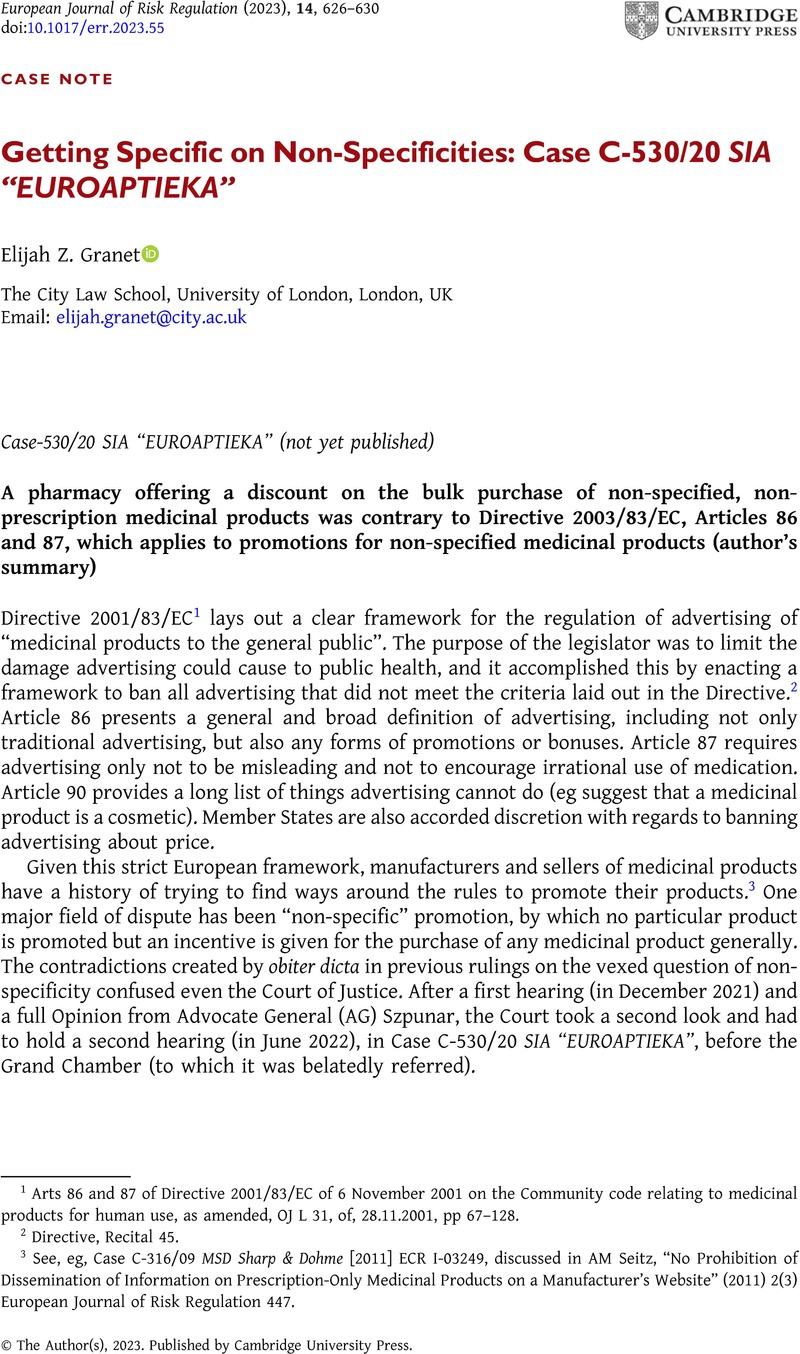No CrossRef data available.
Published online by Cambridge University Press: 28 July 2023

1 Arts 86 and 87 of Directive 2001/83/EC of 6 November 2001 on the Community code relating to medicinal products for human use, as amended, OJ L 31, of, 28.11.2001, pp 67–128.
2 Directive, Recital 45.
3 See, eg, Case C-316/09 MSD Sharp & Dohme [2011] ECR I-03249, discussed in AM Seitz, “No Prohibition of Dissemination of Information on Prescription-Only Medicinal Products on a Manufacturer’s Website” (2011) 2(3) European Journal of Risk Regulation 447.
4 Ministru kabineta noteikumi Nr. 378 “Zāļu reklamēšanas kārtība un kārtība, kādā zāļu ražotājs ir tiesīgs nodot ārstiem bezmaksas zāļu paraugus” (Decree No 378 of the Council of Ministers of 17 May 2011 on the detailed rules for the advertising of medicinal products and detailed rules pursuant to which a medicinal product manufacturer may give free samples of medicinal products to medicinal practitioners), of 17 May 2011 (Latvijas Vēstnesis, 2011, No 78), para 18.12.
5 Facts are summarised in paras 11–19 of the Judgment.
6 Judgment, paras 32–34.
7 Judgment, paras 35–38.
8 Case C-190/20 (not yet published), hereinafter “A”, cited at para 40 of the Judgment.
9 Judgment, paras 44–45.
10 Case C-190/20 (not yet published).
11 A, para 50, mentioned at para 49 of the Judgment.
12 DocMorris, para 21, mentioned at para 50 of the Judgment.
13 Judgment, para 51.
14 Judgment, para 58.
15 Judgment, paras 63–64.
16 Judgment, para 66.
17 Judgment, para 68.
18 Judgment, paras 71–73.
19 [2003] ECR I-14887.
20 [2009] ECR I-02629.
21 A Alemanno and A Spina, “Nudging Legally: On the Checks and Balances of Behavioural Legislation” (2014) 12(2) International Journal of Constitutional Law 429, 441.